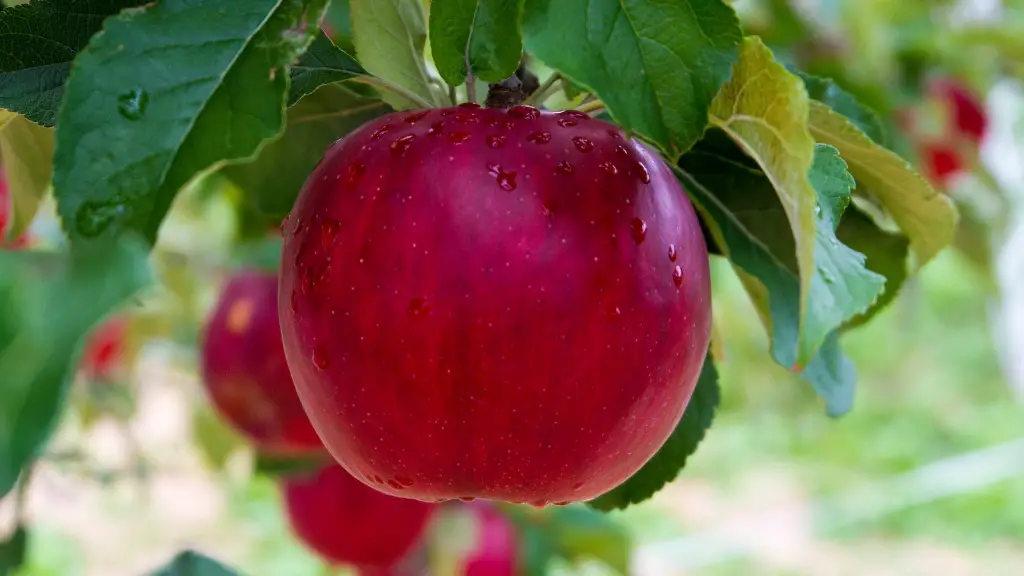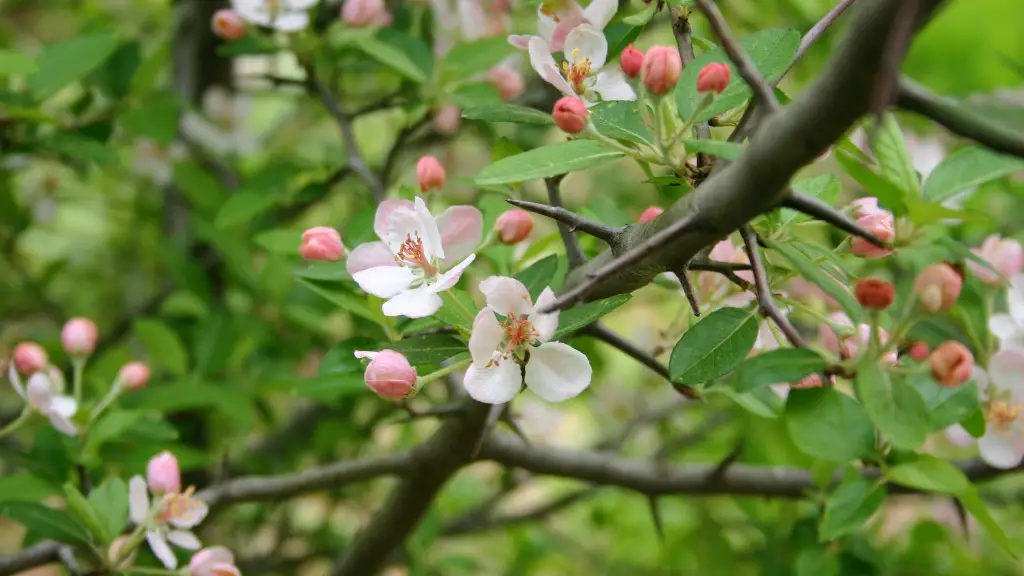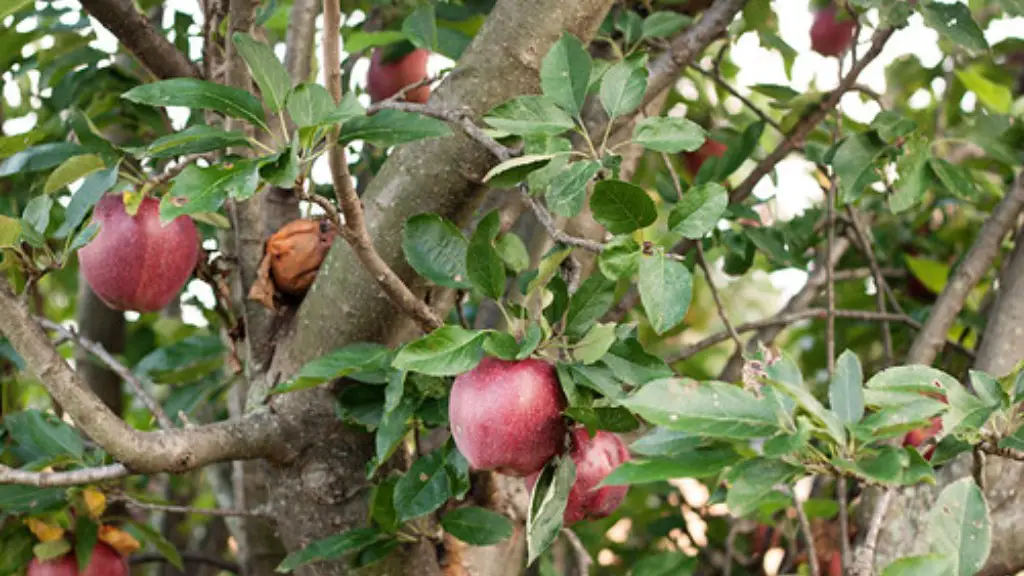If you are looking for ways to get your lemon tree to bear fruit, you have come to the right place. Growing a lemon tree is actually quite simple and rewarding
First, you need to select a type of lemon that is suitable for your climate. There are different types of lemons, such as Key Limes, Meyer Lemons, Lisbon Lemons, and Eureka Lemons. When selecting a tree, look for trees that are disease-resistant and produce colorful, fragrant fruits.
Next, the soil needs to be well-drained and fertile, with a pH balance between 5.5 and 6.5. If necessary, add compost or mulch to create the right conditions for growth. Additionally, make sure the lemon tree receives at least 6 hours of direct sunlight per day.
Third, watering is essential for healthy lemon tree growth. It is important to water the base of the tree 1-2 times per week, until the soil is damp, but not soggy. Additionally, fertilize the tree every 3-4 weeks with a balanced, all-purpose fertilizer.
Fourth, you should prune the lemon tree to create an open, vase-shaped canopy with adequate air movement. This will help promote flowering and fruiting. Remove dead or dying branches, crossing branches, and suckers as soon as they appear.
Fifth, to help the lemon tree bear fruit, you should grow it alongside another pollinating tree, such as a lime or orange tree. This will help encourage cross-pollination and increase fruit production.
Finally, patience and persistence is key. Lemon trees can take up to 4 years before they are mature enough to produce fruit. Be sure to give your tree the necessary conditions, such as water, sunlight, and fertilizer, to promote healthy growth. With some luck, you will be harvesting delicious lemons from your own tree in no time!
Lemon Tree Care & Maintenance
It is important to care for your lemon tree year-round for optimal production. Regular check-ins for pests, diseases, and other environmental issues are essential for maintaining healthy tree growth. Here are 5 key tips for lemon tree maintenance:
First, remove any dead or wilted leaves from the tree. Diseased or bug-infested leaves can spread the problem to healthy leaves, branches, or even other trees. Pay close attention to the underside of leaves, where pests like to hide.
Second, regularly inspect your tree for pests, such as scale, mites, and aphids. Remove pests manually with a cloth, or use a horticultural oil spray to discourage bug infestations.
Third, prune the tree in early spring for a healthy shape and size. Remove crossed branches and excessive growth to create an open vase canopy. Additionally, trim away any suckers that emerge from the main stem.
Fourth, mulch around the base of the tree to maintain soil moisture and prevent weed growth. Be sure to keep mulch away from the trunk; otherwise, it can attract pests and cause rot.
Finally, water the tree 1-2 times per week in dry spells to maintain the right balance of soil moisture. Make sure the soil never dries out completely; otherwise, it can stress the tree and stunt growth.
Lemon Tree Diseases & Prevention
Lemon trees are susceptible to various diseases and issues. Being aware of the most common symptoms and preventive measures can help ensure a healthy tree and bountiful harvest. Here are 3 common issues to look out for:
First, rust disease is a common fungal disease of citrus plants. It is characterized by rusty patches and tiny black fruiting bumps on the leaves and stems. If you notice these symptoms, apply a fungicidal spray and remove any infected leaves from the tree.
Second, sooty mold is a fungus that develops in sticky honeydew secretions from aphids and other pests. To prevent and treat sooty mold, use a horticultural oil spray to eliminate pests and clean off the tree with a mild soapy solution.
Third, sunny canker is a bacterial disease that can spread quickly through the lemon tree. Prevention is key, as the disease cannot be cured once it has infected the tree. Keep an eye out for any wilted, yellow leaves that are attached to healthy shoots. Promptly prune away any infected branches, and correct any drainage and irrigation issues to prevent this disease from spreading.
Harvesting & Storing Lemons
Harvesting and storing lemons properly will ensure your crop stays fresh for as long as possible. Here are a few tips for harvesting and storing lemons:
First, lemons should be allowed to ripen on the tree before harvesting. To determine whether lemons are ready to pick, look for a vibrant yellow color, a heavy feeling, and fragranc. Ripe lemons will be full of juice and easy to separate from the branch.
Second, when harvesting ripe lemons, use a sharp knife to cut them away from the tree, making sure not to damage the branches. Avoid pulling or tugging on the fruit, which can cause damage not only to the fruit, but also to the tree.
Third, store the harvested lemons in a cool and dry area, such as the fridge or a dark pantry. Lemons will last for about 7 days in the fridge and up to 2 weeks when stored in the pantry. Additionally, you can freeze fresh lemon juice for up to 12 months.
Finally, if you have too much of a crop, you can share the bounty with family and friends, or even preserve the lemons by drying or pickling. Homemade lemonade is another great way to take advantage of all those luscious lemons!
Growing & Selling Lemon Trees
Not only is growing lemon trees a rewarding experience, but it can also be a great business opportunity. Here are 3 strategies for selling your own lemon trees:
First, be sure to grow your trees in an area that receives plenty of sunlight. Additionally, you should use a balanced fertilizer and regularly prune the trees to encourage stronger, healthier growth. Finally, be sure to keep your trees well-watered, but not too wet.
Second, you can offer your lemon trees for sale at farmer’s markets, plant sale events, or even online. If planting your trees outdoors isn’t practical, consider growing them in containers or pots, as container plants are easier to transport and display.
Third, pricing is key when selling your trees. Consider costs such as soil, fertilizer, water, and your own time to determine a fair rate for your trees. Additionally, offer a discount for buyers who purchase multiple trees, or a bundle deal with a pot and fertilizer included.
Finally, it is always a good idea to include information with your tree, such as care instructions and recommendations. Include a card with contact details and invite customers to reach out with any questions they may have.
Conclusion
If you are looking to get your lemon tree to bear fruit, there are several steps you can take. From selecting the right variety to providing the optimal conditions for growth, to regular care and maintenance, there are many factors to consider. Additionally, you can use your lemon tree to start your own business by selling trees or homemade preserves. Whether you are growing your lemon tree for fun or profit, the key is patience and persistence!




